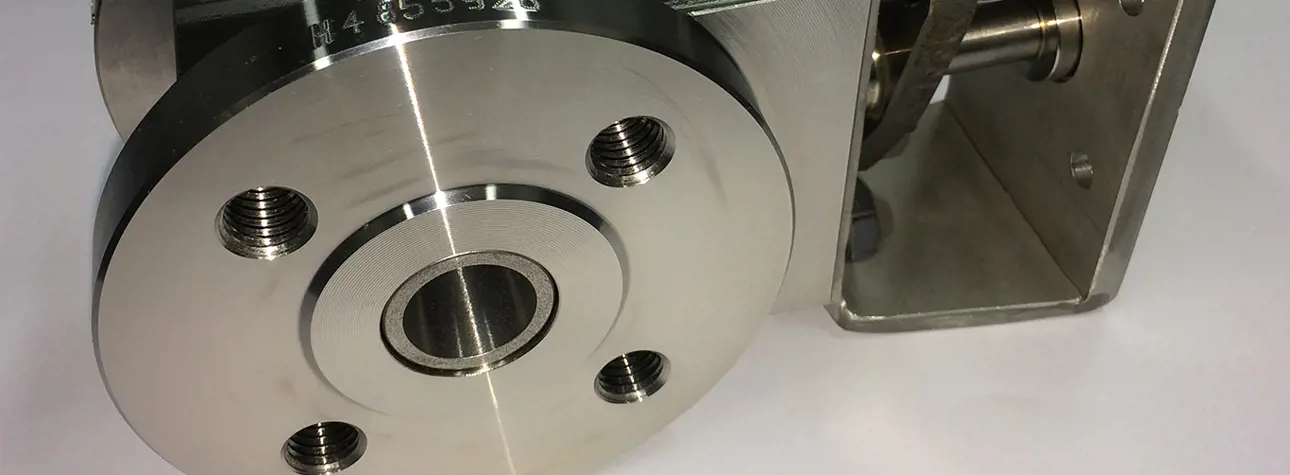How the right wear protection materials can extend valve lifetimes
Valve World magazine 'Top of mind' story | “If the wear protection materials are properly specified, valves can successfully contribute major improvements in process availability.”

When Valve World recently bumped into old acquaintance Jussi Hellman from Neles (as of April 1st 2022 Valmet Flow Control business line), he immediately apologised for his voice. “I’ve just spent the whole morning talking about wear phenomena to a new customer in the offshore oil and gas sector. Valves on platforms have to cope with severe conditions so he was keen to hear how our materials solutions could help him.”
And without doubt Mr. Hellman would have had plenty of interesting options to present. For instance, Neles can now offer valves made of so-called bi-metal materials. Mr. Hellman: “our bi-metal valves overcome the limitations and weaknesses of a weld-clad valve and a lined valve. A pressure-retaining body can be a basic material such as carbon steel or stainless steel and we use an advanced powder metallurgy process to cover the wetted surfaces with a wear resistant second material. The two material layers are perfectly bonded together in the process, and we have much better control over homogeneity and can ensure consistent quality in the durable valves.”
We have found that in many cases we can increase valve lifetimes from months to years by carefully considering materials selection.
Other solutions to have come out of Neles’ R&D department include a range of metal matrix composite materials to be used in parallel with ceramic material options, continued Mr. Hellman. “Neles continues to perform research and development into a number of new materials which are all designed to increase equipment reliability and lifetimes. For example, everyone will tell you that a ceramic material is hard, but did you realise that technical ceramics have limited toughness, and cannot offer the best reliability under all circumstances? That’s why we have developed a hybrid solution as well so that we can offer customers the optimum material for each application.”
Asked for some examples where Neles’ ceramics or metal matrix composite materials are being used to good effect Mr. Hellman quickly noted uses in FCC slurry oil control, lime mud control, quench water control, acid leaching autoclaves and the like. “We have found that in many cases we can increase valve lifetimes from months to years by carefully considering materials selection. And, as we can produce smart valve controller diagnostics, we can capture and refine data to better understand materials performance, and also to help predict the remaining lifetimes of the valves. Again, this helps customers better plan maintenance activities.”
Extending uptimes

This message, it seems, is gaining widespread acceptance. “Of course valve engineers working for end users are immediately convinced about the benefits of using our wear protection materials, but engineering companies too have an interest in optimising materials as they want to deliver what has been promised. And the licensor for example also wants to hand over a plant which will be reliable, safe and meet all environmental regulations. They tell me this is important as a way to further cement their reputation.”
Before making his excuses and preparing to meet yet another client, Mr. Hellman handed out a quick challenge to the flow control community. “Nowadays people who work with valves understand that corrosion comes in many forms. Yet how many people can identify the various types of wear that can occur? This is fundamental if you wish to specify a valve that will perform as expected. This is why we at Neles always ask engineers to fully describe the process when looking to purchase a valve. Yes the standard operating parameters are important valve sizing data but we also need to know the start-up conditions, which cleaning agents might be used, the type of impurities that could be expected, etc. The more data we have, the better we can identify and resolve possible corrosion and wear issues on behalf of our customers.”
Meet Jussi Hellman
Mr. Hellman has worked for several Neles business units for 17 years and is currently Materials Engineering Manager. When not at work he enjoys carpentry and helping his wife to train and run her sheepdogs.
Written by David Sear
Article originally published as 'Top of mind' story in Valve World February 2019 issue.
Text originally published in 2019, and slightly updated in April 2022, due to the company name change to Valmet. As of the 1st of April 2022, Neles is now Valmet Flow Control business line

Subscribe to our newsletter
Subscribe now to flow control newsletter and receive the latest insights directly to your email.
SubscribeRead more about wear protection




